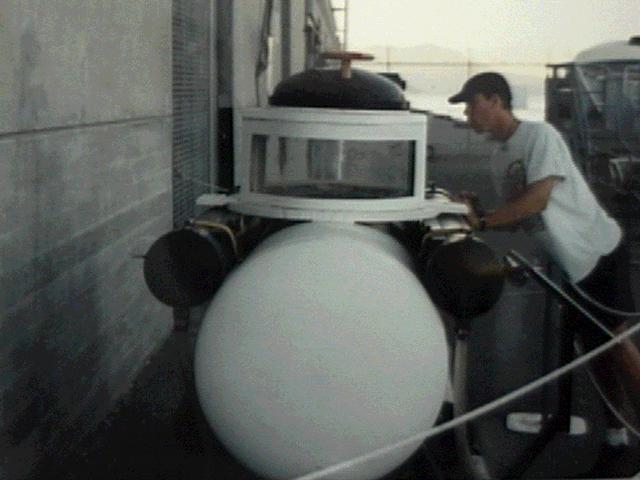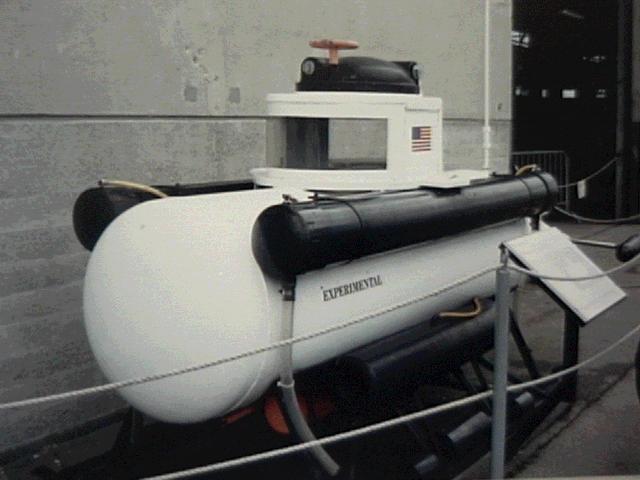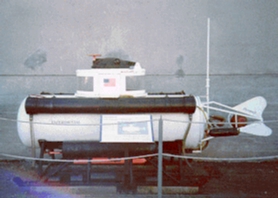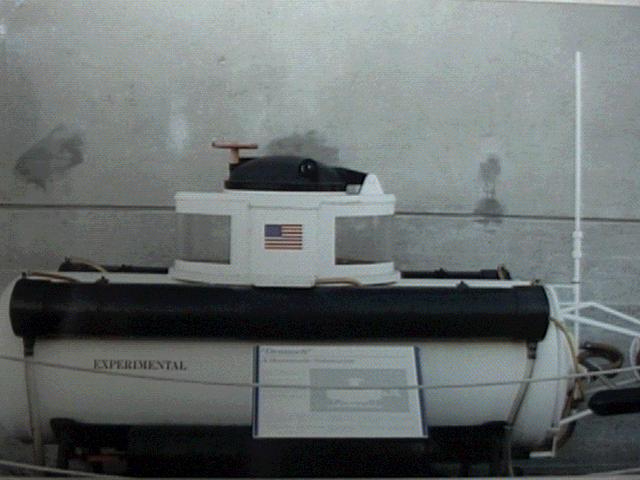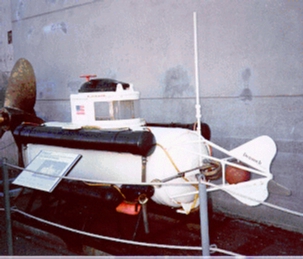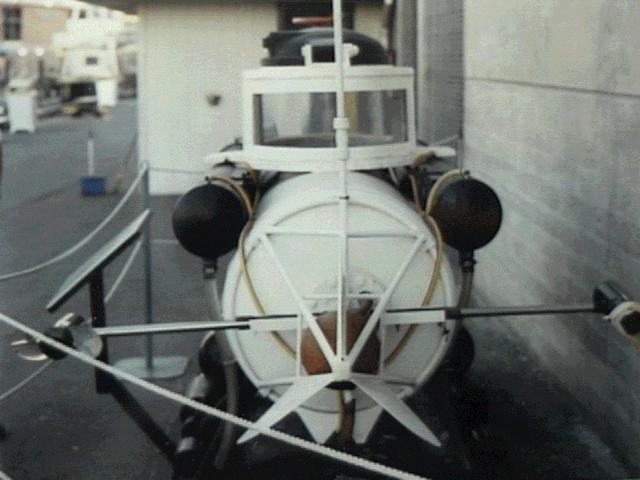"Dennoch"
----------------
A Homemade Submarine
Dennoch is a homemade two-person submarine. The sub originated as a
design project by Standford University mechanical engineering students
Scott Anderson, Mark Brosius, Scott Charmness, and Tony Stone. DENNOCH
was then built by the four students in a garage in Menlo park.
Simple in design and construction, DENNOCH is fully operational and
features clever design solutions to the technical problems of building a
submersible vessel. DENNOCH is a true submarine with a self-contained
atmosphere, propulsion system, and ballast system. Among the many
features contained in the sub are : two three-horsepower submersible
electric motors that are independently controlled, two twelve volt GEL
cell batteries, a variable ballast system, emergency ballast which can
be dropped to regain positive buoyancy in case of emergency, and a life
support system to supply oxygen and remove toxic carbon dioxide from the
submarine's atmosphere.
DENNOCH was designed for a maximum depth of 400 feet for a duration of
three hours. DENNOCH was successfully test dived to a depth of 100 feet
in the clear icy waters of Lake Tahoe on July 2, 1989.
HATCH - The submarine's "door" uses precision ground surfaces and an
O-ring seal to keep water out. An adjustable latch maintains pressure on
the O-ring seal to prevent leaks at shallow depths. Water pressure keeps
the hatch sealed once the vessel passes below fifteen feet.
EMERGENCY BALLAST - One of the many safety features, this 200 pound
weight can be released mechanically to regain positive buoyancy and
bring the submarine to the surface in an emergency.
VIEWPORTS - These windows are made from one-inch thick acrylic. To
prevent optical distortion, they were formed at a high temperature and
cooled very slowly over several days. A thin polycarbonate coating
protects against small chips and cracks that could develop under the
stress of a deep dive.
STATIC BALLAST - Although DENNOCH weighs 1500 pounds, the water it
displaces weighs less, so an additional 600 pounds of steel ballast was
added to gain negative buoyancy.
MAIN BALLAST TANKS - These PVC tanks are open to the sea via the tubes
at the bottom of the tank. In order to surface, water in the tanks is
forced out with compressed air from SCUBA tanks carried inside the
submarine. These tanks also provide additional buoyancy on the surface.
TAILCONE - The tail structure serves a dual purpose. It protects the
hoses exiting the rear of the submarine and maintains stability during
rapid accent. Without it, a phenomenon known as "vortex shedding" would
cause the relatively bulbous submarine to oscillate uncontrollably
during surfacing, similar to the way a leaf falls.
PRESSURE HULL - Made of 3/8-inch thick steel, the 288 gallon cylinder
began life as a propane tank. Extensive bracing has been added to
strengthen the openings necessary to convert the tank into a submarine.
The hull is theoretically capable of withstanding depths in excess of
1000 feet, although several other elements of the submarine have limits
of less than half that depth.
STERN BUOYANCY - The original version of the DENNOCH was slightly tail
heavy so a regulation basketball was added to provide the needed
buoyancy. Additionally, a sliding weight within the submarine was used
to vary the pitch when underway.
TRIM TANKS - Formerly oxygen tanks, these side mounted tanks can be
filled with varying amounts of water to trim the submarine. Like the
main ballast tanks, the water can be forced out with compressed air from
SCUBA tanks within the submarine.
MOTORS - Each of these modified trolling motors is capable of producing
45 pounds of thrust resulting in a top speed of three miles per hour.
Each motor has separate controls and by running the motors in opposite
directions enables the pilot to steer, eliminating the need for a
rudder.
|


